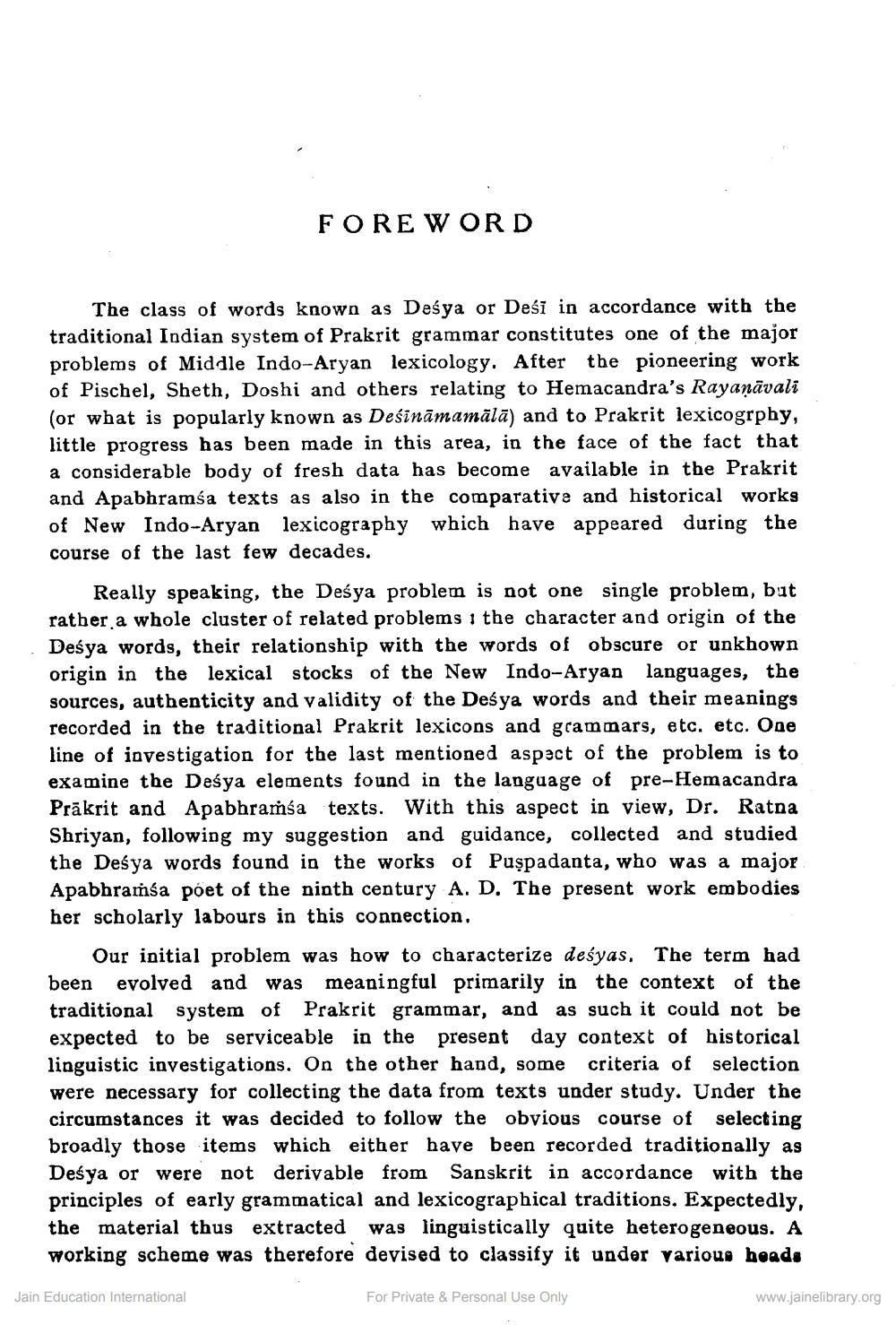Book Title: Mahapurana of Puspdanta Author(s): Ratna N Shriyan Publisher: L D Indology Ahmedabad View full book textPage 6
________________ FOREWORD The class of words known as Desya or Desi in accordance with the traditional Indian system of Prakrit grammar constitutes one of the major problems of Middle Indo-Aryan lexicology. After the pioneering work of Pischel, Sheth, Doshi and others relating to Hemacandra's Rayaņāvali (or what is popularly known as Deśināmamālā) and to Prakrit lexicogrphy, little progress has been made in this area, in the face of the fact that a considerable body of fresh data has become available in the Prakrit and Apabhramsa texts as also in the comparative and historical works of New Indo-Aryan lexicography which have appeared during the course of the last few decades. Really speaking, the Deśya problem is not one single problem, but rather a whole cluster of related problems i the character and origin of the Deśya words, their relationship with the words of obscure or unknown origin in the lexical stocks of the New Indo-Aryan languages, the sources, authenticity and validity of the Deśya words and their meanings recorded in the traditional Prakrit lexicons and grammars, etc. etc. One line of investigation for the last mentioned aspect of the problem is to examine the Deśya elements found in the language of pre-Hemacandra Prākrit and Apabhramba texts. With this aspect in view, Dr. Ratna Shriyan, following my suggestion and guidance, collected and studied the Deśya words found in the works of Puspadanta, who was a major abhraíśa poet of the ninth century A. D. The present work embodies her scholarly labours in this connection. Our initial problem was how to characterize deśyas, The term had been evolved and was meaningful primarily in the context of the traditional system of Prakrit grammar, and as such it could n expected to be serviceable in the present day context of historical linguistic investigations. On the other hand, some criteria of selection were necessary for collecting the data from texts under study. Under the circumstances it was decided to follow the obvious course of selecting broadly those items which either have been recorded traditionally as Deśya or were not derivable from Sanskrit in accordance principles of early grammatical and lexicographical traditions. Expectedly, the material thus extracted was linguistically quite heterogeneous. A working scheme was therefore devised to classify it under various heads Jain Education International For Private & Personal Use Only www.jainelibrary.orgPage Navigation
1 ... 4 5 6 7 8 9 10 11 12 13 14 15 16 17 18 19 20 21 22 23 24 25 26 27 28 29 30 31 32 33 34 35 36 37 38 39 40 41 42 43 44 45 46 47 48 49 50 51 52 53 54 55 56 57 58 59 60 61 62 ... 348
